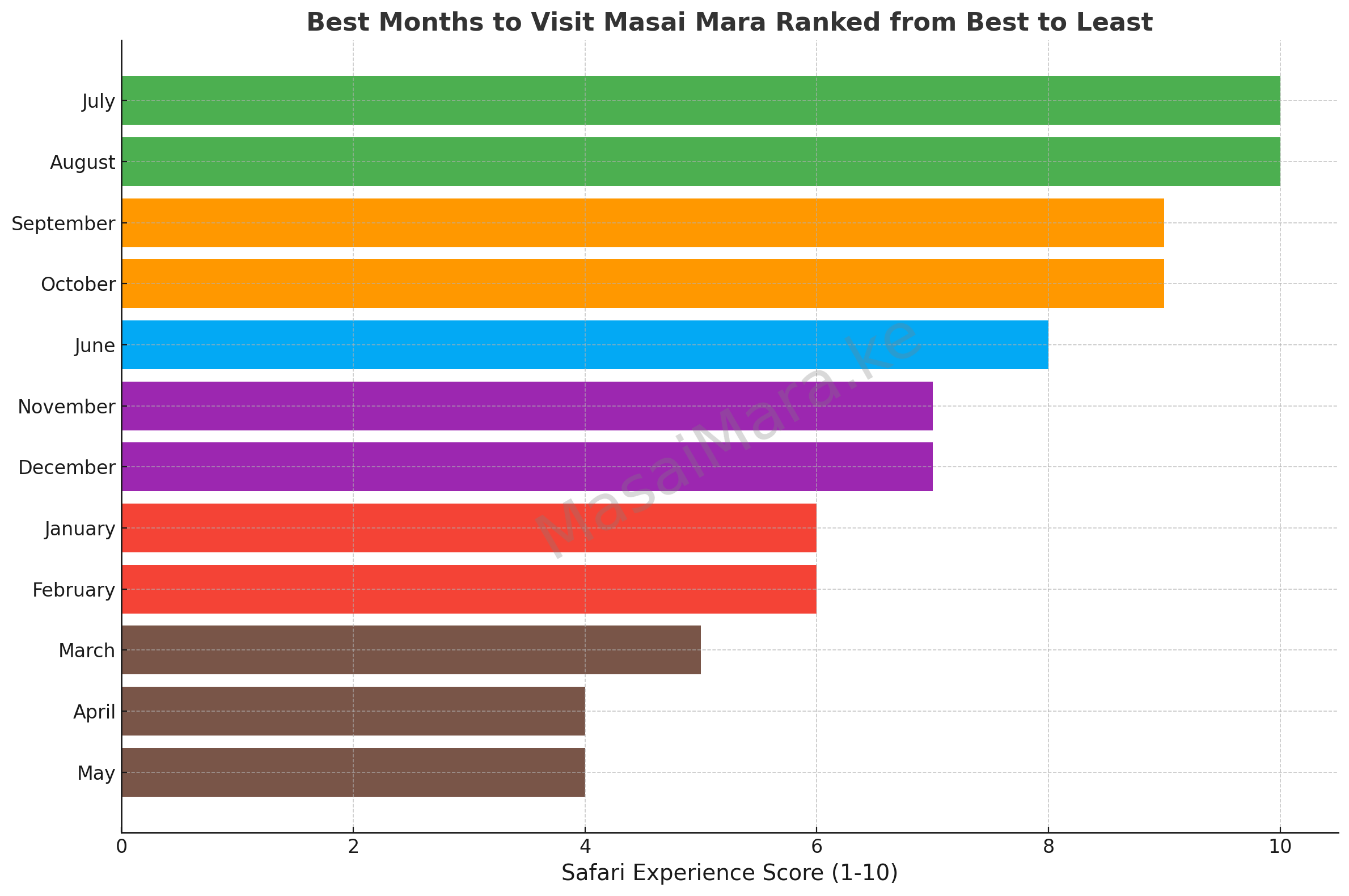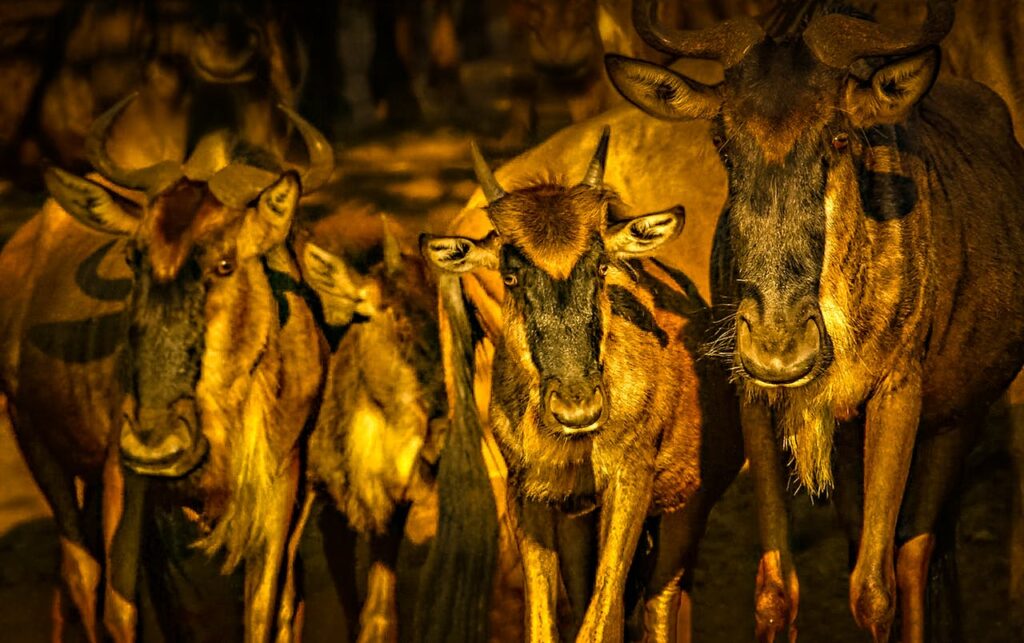Yes, September is one of the absolute best months for a Masai Mara safari, offering exceptional wildlife sightings, ideal weather conditions, and the dramatic spectacle of the Great Migration’s river crossings. According to MasaiMara.ke’s Safari Experience Score, September earns a remarkable 10 out of 10, placing it at the very top of the safari calendar. This month perfectly blends peak wildlife activity, comfortable weather, and unforgettable safari experiences, making it a favorite among safari enthusiasts, photographers, and wildlife lovers worldwide. If you’re looking for breathtaking action-packed game drives, iconic migration moments, and a rich diversity of wildlife, September is the ultimate time to visit Masai Mara.

1. Why September is Safari Gold: The Great Migration in Full Swing
One of the biggest draws of September is the Great Migration, often described as the “World’s Greatest Wildlife Show.” During this time, over 1.5 million wildebeest, along with hundreds of thousands of zebras and gazelles, are still present in the Masai Mara after crossing from Tanzania’s Serengeti.
- River Crossings at Their Peak: The Mara and Talek Rivers become stages of life-and-death drama, with wildebeest braving crocodile-infested waters while predators like lions, leopards, and hyenas lie in wait along the banks. Witnessing a crossing is a once-in-a-lifetime experience that many travelers specifically time their trips for.
- Abundant Predator Activity: September is a predator’s paradise. With an endless buffet of prey, big cats like lions, cheetahs, and leopards are highly active, and it’s common to witness dramatic hunts in the open plains.
- Large Wildlife Concentrations: Beyond the migrating herds, Masai Mara’s resident wildlife thrives—elephants, giraffes, buffaloes, rhinos, and diverse antelope species are present in large numbers, offering rich biodiversity alongside the migration.
Forum Insight: “September was mind-blowing. We saw three river crossings in one day, plus cheetahs hunting. The action was non-stop, and the photo opportunities were unreal.”
2. September Weather in Masai Mara: Safari Perfect Conditions
September falls within the dry season, providing optimal weather for game drives and wildlife viewing.
- Temperature: Daytime highs average 26°C to 28°C (79°F to 82°F), with cool mornings and evenings around 12°C to 14°C (54°F to 57°F)—perfect for early morning safaris and evening game drives.
- Rainfall: September is mostly dry, though occasional light showers may occur late in the month. The dry conditions mean less dense vegetation, making it easier to spot wildlife.
- Road Conditions: The dry season ensures that roads are in excellent condition, allowing access to remote areas of the park that might be challenging during the rainy season.
- Low Humidity: Comfortable, dry air with minimal insect activity, making for a more enjoyable safari experience.
3. Park Fees and Costs: Worth Every Penny
September is part of the peak safari season, which means higher costs compared to off-peak months. However, the incredible wildlife experiences justify the price.
- Park Entry Fees:
- Non-residents: $200 per day (double the $100 charged from January to June).
- Kenyan citizens: KES 3,000 per day (compared to KES 1,500 in the low season).
- Accommodation Rates: Safari camps and lodges are at their highest rates, and many top camps are fully booked months in advance due to the demand. However, the quality of the safari experience during this time makes it worth the premium.
- Tip: To manage costs, consider staying in camps just outside the reserve or booking well in advance to secure better deals.
Traveler Review: “Yes, it was expensive in September, but it was worth every dollar. The river crossings, the big cats, the incredible guides—it was the best safari experience of my life.”
4. Pros and Cons of Visiting Masai Mara in September
✅ Pros:
- Peak of the Great Migration: High chances of witnessing dramatic river crossings.
- Incredible Predator Action: Lions, cheetahs, and leopards are highly active.
- Ideal Weather: Dry, sunny days with clear skies and perfect safari conditions.
- Great Photography Opportunities: Golden light, dramatic landscapes, and abundant wildlife.
- High Wildlife Concentration: Both migratory herds and resident species are easy to spot.
⚠️ Cons:
- High Costs: Park fees and accommodation rates are at their peak.
- Crowded Popular Spots: Key crossing points can attract many safari vehicles.
- Need for Early Bookings: Lodges and camps fill up quickly—booking several months in advance is essential.
5. How September Compares to Other Months
- Versus August (10/10): Both are equally phenomenal. August may have slightly more migration activity, but September offers fewer crowds as the peak rush starts to ease.
- Versus October (9/10): October still has migration activity, but herds start moving back to the Serengeti. September offers more reliable river crossings and predator action.
- Versus June (8/10): June has fewer tourists and lower costs but lacks the migration drama of September.
- Versus December (7/10): December offers lush scenery and excellent resident wildlife, but it doesn’t compare to the migration spectacle of September.
Final Verdict: Is September Worth It?
Without a doubt, September is one of the best times to visit Masai Mara. It offers the perfect trifecta of abundant wildlife, dramatic migration events, and ideal safari weather. While it comes with higher costs and some crowding around key hotspots, the unforgettable experiences—witnessing river crossings, predator hunts, and vast herds sweeping across the plains—make it worth every penny. If you’re planning your dream safari, September should be at the top of your list, earning its perfect 10/10 Safari Experience Score from MasaiMara.ke for all the right reasons.

